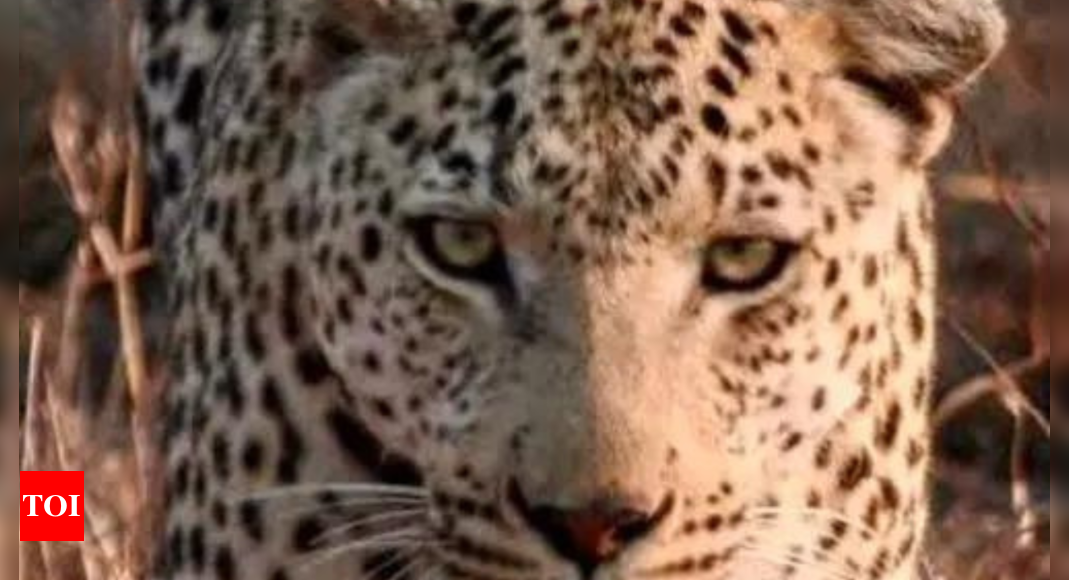
Experts say animals are learning safest ways as several of them died after speeding motorists hit them recently
MUMBAI: Its not just the motorists but also the animals who are now enjoying their safe drive through the Samruddhi expressway.
After initial hiccups which saw several motorists hitting animals crossing the 701 km super expressway, the animals have learnt their new paths built either below or over the super-communication highway.
The latest results from the camera-trapping exercise by the wildlife institute of india (WII) has found various wildlife species including leopards, langurs, ungulates, small mammals and carnivores using the wildlife under or overpasses and tunnels built across greenfield expressway to cross their habitats.
These animals were trapped in video footages within the first month of the monitoring exrecise started by WII. They include herds of large ungulates like nilgai (Boselaphus tragocamelus), chinkara, and wild pig (Sus scrofa), smaller mammals like the Indian hare (Lepus nigricollis), Indian crested porcupine (Hystrix indica) and mongoose (Herpestidae), carnivore like leopard (Panthera pardus), and gray langurs (Semnopithecus entellus).
The observations will contribute valuable scientific data regarding wildlife utilization of the overpasses and would further assist in assessing the effectiveness of wildlife mitigation measures taken along the expressway that lies tangent to many forest reserves, said a WII release.
The study further aims to analyse this information in light of structural and environmental factors that make some structures more efficient than others in terms of wildlife crossings. Monitoring team has deployed 64 camera traps across the wildlife overpasses and wildlife underpasses.
The Nagpur-Mumbai Super Communication Expressway (NMSCE), also called the Samruddhi Expressway is a vital infrastructure project linking Maharashtra’s economic and agricultural hubs. The 701 km expressway passes through three varied habitat types, starting from the dry deciduous forests near Nagpur, grasslands in the middle section, and the Western Ghats near the end of the expressway in Mumbai. Notably, the expressway does not intersect any protected area, although it passes through tiger corridors, and important habitats of multiple species such as the Great Indian Bustard (Ardeotis nigriceps), Indian wolf (Canis lupus pallipes), blackbuck (Antilope cervicapra) and chinkara (Gazella bennettii).
Recognizing the potential impact on wildlife that the expressway may exert, the Maharashtra State Road Development Corporation (MSRDC) integrated wildlife-friendly measures during the early stages of planning and construction. Consequently, a collaborative multi-year ecological study was carried out by the Wildlife Institute of India (WII), that helped identify the important wildlife focus areas (WFAs) along the expressway and the site-specific mitigation measures that would help reduce the predicted impacts of the expressway on wildlife.
A total of 1797 mitigation structures of 11 types including wildlife underpasses and overpasses were constructed on sensitive stretches on the expressway besides tunnels. The expressway project stands out as an example of an infrastructure project in which biodiversity concerns were integrated into project planning right from the inception stage, rather than an afterthought.
“We are very much happy to collaborate with the Wildlife Institute of India during the planning stage of the expressway to suggest mitigation measures. Now we have engaged WII to monitor the underpasses and overpasses for the next five years. We hope to generate information which will be critical for further improving the connectivity of the wildlife across the expressway,” said MSRDC MD Anil Gaikwad. Dr. Bilal Habib who is leading the study, said the use of overpasses by species like Chinkara, Leopard and Porcupine is the first indication of acceptance of mitigation measures by wildlife which is specific to the region.
Chief Wildlife Warden, Maharashtra Maheep Gupta said the initial results of the monitoring are encouraging and we expect more insights as the study progresses. The results from this study shall help to implement mitigation measures across other highways in the state, he added. Virendra Tiwari, Director of Wildlife Institute of India, hoped to make better decisions about the implementation of the mitigation measures. If development agencies join hands with conservation agencies at the planning stage, it will be easy to integrate the concerns of conservation into the development narrative, he added.
The team is also concurrently conducting a bird count along the expressway. To date, data has been collected from 310 points. At intervals of every 500 meters, the team conducts point counts to enumerate bird species present in the vicinity. This systematic approach allows for a comprehensive assessment of avian diversity and distribution along the Nagpur-Mumbai Super Communication Expressway. We shall also monitor the light intensity and sound along the highway in the coming years, a WII release stated.
